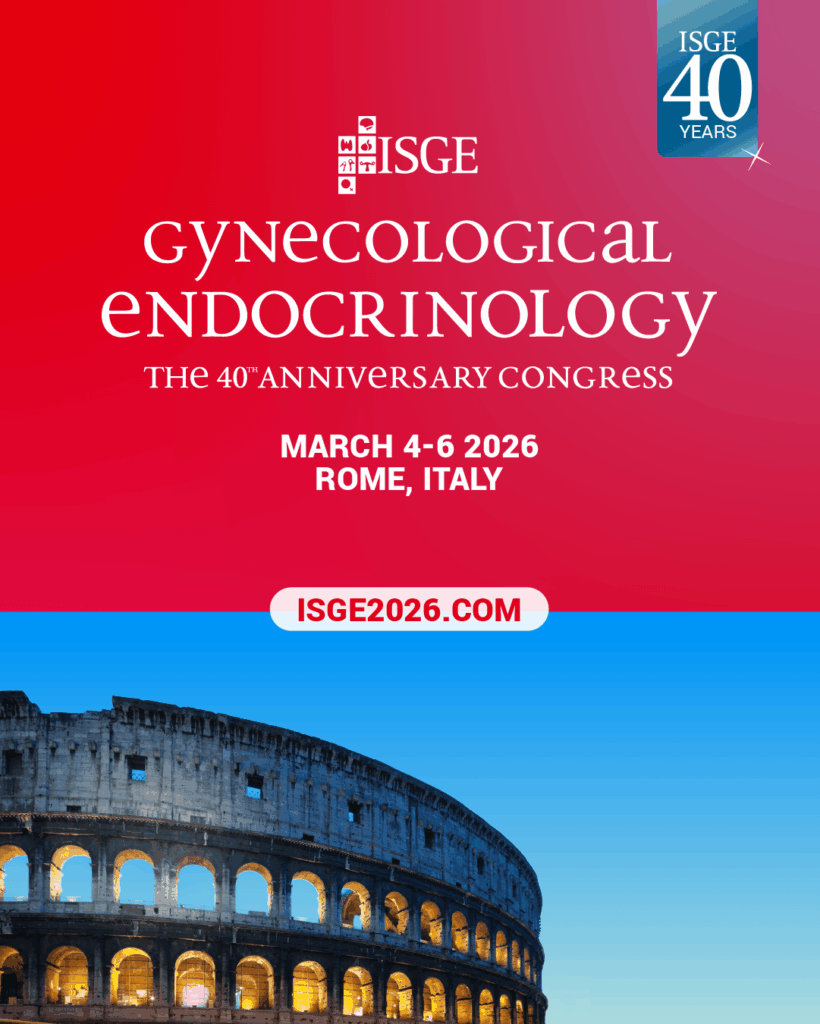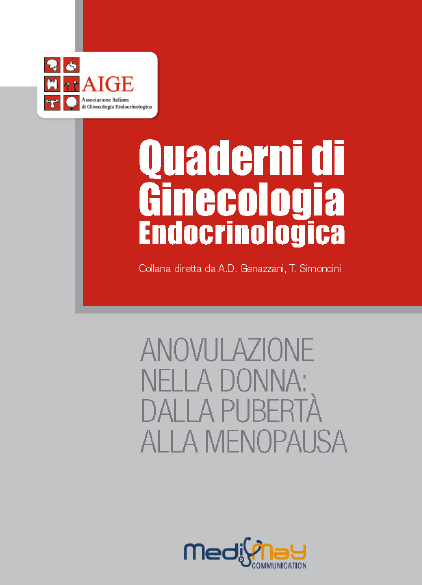-
Leo Dunkel, Richard Quinton
Induction of puberty
Eur J Endocrinol 2014, 170: R229-R239Abstract
Puberty is the period during which we attain adult secondary sexual characteristics and reproductive capability. Its onset depends upon reactivation of pulsative GNRH, secretion from its relative quiescence during childhood, on the background of intact potential for pituitary–gonadal function. This review is intended: to highlight those current practices in diagnosis and management that are evidence based and those that are not; to help clinicians deal with areas of uncertainty with reference to physiologic first principles; by sign-posting relevant data arising from other patient groups with shared issues; to illustrate how recent scientific advances are (or should be) altering clinician perceptions of pubertal delay; and finally, to emphasise that the management of men and women presenting in advanced adult life with absent puberty cannot simply be extrapolated from paediatric practice. There is a broad spectrum of pubertal timing that varies among different populations, separated in time and space. Delayed puberty usually represents an extreme of the normal, a developmental pattern referred to as constitutional delay of growth and puberty (CDGP), but organic defects of the hypothalamo–pituitary–gonadal axis predisposing to hypogonadism may not always be initially distinguishable from it. CDGP and organic, or congenital hypogonadotrophic hypogonadism are both significantly more common in boys than girls.
Moreover, around 1/3 of adults with organic hypogonadotrophic hypogonadism had evidence of partial puberty at presentation and, confusingly, some 5–10% of these subsequently may exhibit recovery of endogenous gonadotrophin secretion, including men with Kallmann syndrome. However, the distinction is crucial as expectative (‘watch-and-wait’) management is inappropriate in the context of hypogonadism. The probability of pubertal delay being caused by organic hypogonadism rises exponentially both with increasing age at presentation and the presence of associated ‘red flag’ clinical features. These ‘red flags’ comprise findings indicating lack of prior ‘mini-puberty’ (such as cryptorchidism or micropenis), or the presence of non-reproductive congenital defects known to be associated with specific hypogonadal syndromes, e.g. anosmia, deafness, mirror movements, renal agenesis, dental/digital anomalies, clefting or coloboma would be compatible with Kallmann (or perhaps CHARGE) syndrome. In children, interventions (whether in the form or treatment or simple reassurance) have been historically directed at maximising height potential and minimising psychosocial morbidity, though issues of future fertility and bone density potential are now increasingly ‘in the mix’. Apubertal adults almost invariably harbour organic hypogonadism, requiring sensitive acknowledgement of underlying personal issues and the timely introduction of sex hormone replacement therapy at more physiological doses
-
Grigoris Effraimidis, Wilmar M Wiersinga
Autoimmune thyroid disease: old and new players
Eur J Endocrinol 2014, 170: R241–R252Abstract
The last 10 years have seen some progress in understanding the etiology of autoimmune thyroid disease (AITD). The female preponderance can now be explained – at least in part – by fetal microchimerism and X-chromosome inactivation. The number of identified susceptibility genes for AITD is increasing (among others now including TSHR, TG, HLA, CTLA4, PTPN22, CD40, FCRL3, IL2RA, and FOXP3), but these genes together probably do not explain more than about 10% of the heritability of AITD. As twin studies indicate that genes contribute for 70% of AITD, it follows that there must be many more loci, each of them contributing a little. While the genetic studies have clarified why various autoimmune diseases so often cluster in the same patient, the molecular mechanism of action of these genetic polymorphisms (frequently located in introns) has hardly been explained. Polymorphisms in AITD susceptibility genes may become helpful in clinical practice, e.g. in assessing risk of recurrent Graves’ hyperthyroidism (GH) after a course of antithyroid drugs. Moderate alcohol intake decreases the risk on overt GH and overt Hashimoto’s hypothyroidism. Current smokers – as well known – are at increased risk for Graves’ disease, but – surprisingly – at diminished risk for Hashimoto’s thyroiditis. Low selenium and low vitamin D levels might increase the risk of developing AITD, but data are still inconclusive. Current options for preventive interventions in subjects at risk to develop AITD are very limited.
-
Jacques Donnez, Francisco V_azquez, Janusz Tomaszewski, Kazem Nouri, Philippe Bouchard, Bart C. J. M. Fauser, David H. Barlow, Santiago Palacios, Olivier Donnez, Elke Bestel, Ian Osterloh, Ernest Loumaye for the PEARL III and PEARL III Extension Study Group
Long-term treatment of uterine fibroids with ulipristal acetate
Fertil Steril_ 2014; 101:1565–73Abstract
Objective: To investigate the efficacy and safety of ulipristal acetate (UPA) for long-term treatment of symptomatic uterine fibroids.
Design: Repeated intermittent open-label UPA courses, each followed by randomized double-blind norethisterone acetate (NETA) or placebo.
Setting: European clinical gynecology centers.
Patient(s): Two hundred and nine women with symptomatic fibroids including heavy menstrual bleeding.
Intervention(s): Patients received up to four 3-month courses of UPA 10 mg daily, immediately followed by 10-day double-blind treatment with NETA (10 mg daily) or placebo.
Main Outcome Measure(s): Amenorrhea, fibroid volume, endometrial histology.
Result(s): After the first UPA course, amenorrhea occurred in 79% of women, with median onset (from treatment start) of 4 days (interquartile range, 2–6 days). Median fibroid volume change was _45% (interquartile range, _66%; _25%). Amenorrhea rates were 89%, 88%, and 90% for the 131, 119, and 107 women who received treatment courses 2, 3, and 4, respectively. Median times to amenorrhea were 2, 3, and 3 days for treatment courses 2, 3, and 4, respectively. Median fibroid volume changes from baseline were _63%, _67%, and _72% after treatment courses 2, 3, and 4, respectively. All endometrial biopsies showed benign histology without hyperplasia; NETA did not affect fibroid volume or endometrial histology.
Conclusion(s): Repeated 3-month UPA courses effectively control bleeding and shrink fibroids in patients with symptomatic fibroids -
Nazia Raja-Khan, Julie Shah, Christy M. Stetter, Mary E. J. Lott, Allen R. Kunselman, William C. Dodson, Richard S. Legro
High-dose vitamin D supplementation and measures of insulin sensitivity in polycystic ovary syndrome: a randomized, controlled pilot trial
Fertil Steril 2014;101:1740–6Abstract
Objective: To determine the effects of high-dose vitamin D on insulin sensitivity in polycystic ovary syndrome (PCOS).
Design: Randomized, placebo-controlled trial.
Setting: Academic medical center.
Patient(s): Twenty-eight women with PCOS.
Intervention(s): Vitamin D3, 12,000 IU, or placebo daily for 12 weeks.
Main Outcome Measure(s): The primary outcome was quantitative insulin sensitivity check index. Secondary outcomes included glucose and insulin levels during a 75-g oral glucose tolerance test and blood pressure.
Result(s): Twenty-two women completed the study. Compared with placebo, vitamin D significantly increased 25-hydroxyvitamin D (mean [95% confidence interval] in vitamin D group 20.1 [15.7 to 24.5] ng/mL at baseline and 65.7 [52.3 to 79.2] ng/mL at 12 weeks; placebo 22.5 [18.1 to 26.8] ng/mL at baseline and 23.8 [10.4 to 37.2] ng/mL at 12 weeks). There were no significant differences in quantitative insulin sensitivity check index and other measures of insulin sensitivity; however, we observed trends toward lower 2-hour insulin and lower 2-hour glucose. We also observed a protective effect of vitamin D on blood pressure.
Conclusion(s): In women with PCOS, insulin sensitivity was unchanged with high-dose vitamin D, but there was a trend toward decreased 2-hour insulin and a protective effect on blood pressure. -
Miranda G. Mes-Krowinkel, Yvonne V. Louwers, Annemarie G. M. G. J. Mulders, Frank H. de Jong, Bart C. J. M. Fauser, Joop S. E. Laven
Influence of oral contraceptives on anthropomorphometric, endocrine, and metabolic profiles of anovulatory polycystic ovary syndrome patients
Fertil Steril_ 2014;101:1757–65Abstract
Objective: To evaluate the influence of oral contraceptive pills (OCPs) on anthromorphometric, endocrine, and metabolic parameters in women with polycystic ovary syndrome (PCOS).
Design: Retrospective cross-sectional cohort study for the period 1993–2011.
Setting: Tertiary university hospital.
Patient(s): PCOS patients, who never, ever, or at time of screening were using OCPs were included. A total of 1,297 patients, of whom 827 were white, were included. All PCOS patients diagnosed according to the Rotterdam 2003 consensus criteria were divided into three groups: current users, (n ¼ 76; 6% of total), ever users (n ¼ 1,018; 78%), and never users (n ¼ 203; 16%). Ever users were subdivided based on the OCP-free interval.
Intervention(s): None.
Main Outcome Measure(s): Anthromorphometric (blood pressure, cycle duration) and ultrasound (follicle count, mean ovarian volume) parameters, endocrine (SHBG, testosterone, free androgen index, antim€ullerian hormone [AMH]) and lipid profiles.
Result(s): Current users and ever users were compared with never users. In current users, SHBG was increased and androgen levels decreased. Patients with an OCP-free interval of <1 year had a higher mean follicle count, higher AMH level, and increased serum androgen level compared with never users. SHBG levels remained increased until 5–10 years after cessation of OCP use. Conclusion(s): OCP use causes a milder phenotypic presentation of PCOS regarding hyperandrogenism. However, it does not alter parameters associated with increased health risks. -
Marinus J.C. Eijkemans, Frans van Poppel, Dik F. Habbema, Ken R. Smith, Henri Leridon, Egbert R. te Velde
Too old to have children? Lessons from natural fertility populations
Hum. Reprod. (2014) 29 (6): 1304-1312Abstract
STUDY QUESTION Is it possible to construct an age curve denoting the ages above which women are biologically too old to reproduce?
SUMMARY ANSWER We constructed a curve based on the distribution of female age at last birth in natural fertility populations reflecting the ages above which women have become biologically too old to have children.
WHAT IS KNOWN ALREADY The median age at last birth (ALB) for females is ∼40–41 years of age across a range of natural fertility populations. This suggests that there is a fairly universal pattern of age-related fertility decline. However, little is known about the distribution of female ALB and in the present era of modern birth control, it is impossible to assess the age-specific distribution of ALB. Reliable information is lacking that could benefit couples who envisage delaying childbearing.
STUDY DESIGN, SIZE, DURATION This study is a review of high-quality historical data sets of natural fertility populations in which the distributions of female age at last birth were analysed. The studies selected used a retrospective cohort design where women were followed as they age through their reproductive years.
PARTICIPANTS/MATERIALS, SETTING, METHODS Using a common set of eligibility criteria, large data files of natural fertility populations were prepared such that the analysis could be performed in parallel across all populations. Data on the ALB and confounding variables are presented as box and whisker plots denoting the 5th, 25th, 50th, 75th and 95th percentile distribution of the age at last birth for each population. The analysis includes the estimation of Kaplan–Meier curves for age at last birth of each population. The hazard curve for ALB was obtained by plotting the smoothed hazard curve of each population and taking the lowest hazard within a time period of at least 5 years. This lowest hazard curve was then transformed into a cumulative distribution function representing the composite curve of the end of biological fertility. This curve was based on the data from three of the six populations, having the lowest hazards of end of fertility.
MAIN RESULTS AND THE ROLE OF CHANCE We selected six natural fertility populations comprising 58 051 eligible women. While these populations represent different historical time periods, the distribution of the ages at last birth is remarkably similar. The curve denoting the end of fertility indicates that <3% of women had their last birth at age 20 years meaning that almost 98% were able to have at least one child thereafter. The cumulative curve for the end of fertility slowly increases from 4.5% at age 25 years, 7% at age 30 years, 12% at age 35 years and 20% at age 38 years. Thereafter, it rises rapidly to about 50% at age 41, almost 90% at age 45 years and approaching 100% at age 50 years. LIMITATIONS, REASONS FOR CAUTION It may be argued that these historical fertility data do not apply to the present time; however, the age-dependent decline in fertility is similar to current populations and is consistent with the pattern seen in women treated by donor insemination. Furthermore, for reproductive ageing, we note that it is unlikely that such a conserved biological process with a high degree of heritability would have changed significantly within a century or two.
WIDER IMPLICATIONS OF THE FINDINGS We argue that the age-specific ALB curve can be used to counsel couples who envisage having children in the future. Our findings challenge the unsubstantiated pessimism regarding the possibility of natural conception after age 35 years.
STUDY FUNDING/COMPETING INTEREST(S) No external funding was either sought or obtained for this study. There are no conflicts of interest to be declared. -
S. del Ghianda , M. Tonacchera, P. Vitti
Thyroid and menopause
CLIMACTERIC 2014;17:225–234Abstract
Thyroid dysfunction is common in the general population especially in women. All thyroid diseases are in fact more common in women than in men and may interfere with the reproductive system. Thyroid function and the gonadal axes are related throughout the woman’s fertile period. The relationship between the two glands is mutual. In particular, thyroid hormones affect the reproductive function both directly and indirectly through several actions. Studies on the relationship between menopause and thyroid function are few and do not allow to clarify whether menopause has an effect on the thyroid regardless of aging. With aging, the main changes regarding thyroid physiology and function are: a reduction of thyroid iodine uptake, free thyroxine and free triiodothyronine synthesis and catabolism of free thyroxine while reverse triiodothyronine increases; the level of thyroid stimulating hormone remains normal with sometimes a tendency to higher limits. These changes are present in both sexes without distinction between males and females. The complexity of the relationships can be summarized in three aspects: thyroid status does not infl uence signifi cantly the climacteric
syndrome; menopause may modify the clinical expression of some thyroid diseases, particularly the autoimmune ones; thyroid function is not directly involved in the pathogenesis of the complications of menopause. However, coronary atherosclerosis and osteoporosis may be aggravated in the presence of hyperthyroidism or hypothyroidism. The effects of postmenopausal estrogen replacement on thyroxine requirements in women with hypothyroidism should be considered. -
Philippe A. Halban, Kenneth S. Polonsky, Donald W. Bowden, Meredith A. Hawkins, Charlotte Ling, Kieren J. Mather, Alvin C. Powers, Christopher J. Rhodes, Lori Sussel, Gordon C. Weir
β-Cell Failure in Type 2 Diabetes: Postulated Mechanisms and prospects for Prevention and Treatment
Abstract
OBJECTIVE: This article examines the foundation of _-cell failure in type 2 diabetes (T2D) and suggests areas for future research on the underlying mechanisms that may lead to improved prevention and treatment.
RESEARCH DESIGN AND METHODS: A group of experts participated in a conference on 14–16 October 2013 cosponsored by the Endocrine Society and the American Diabetes Association. A writing group prepared this summary and recommendations.
RESULTS: The writing group based this article on conference presentations, discussion, and debate. Topics covered include genetic predisposition, foundations of β -cell failure, natural history of β -cell failure, and impact of therapeutic interventions.
CONCLUSIONS: β -Cell failure is central to the development and progression of T2D. It antedates and predicts diabetes onset and progression, is in part genetically determined, and often can be identified with accuracy even though current tests are cumbersome and not well standardized.Multiple pathways underlie decreased β -cell function and mass, some of which may be shared and may also be a consequence of processes that initially caused dysfunction. Goals for future research include to 1) impact the natural history of β -cell failure; 2) identify and characterize genetic loci for T2D; 3) target β -cell signaling, metabolic, and genetic pathways to improve function/mass; 4) develop alternative sources of β -cells for cell-based therapy; 5) focus on metabolic environment to provide indirect benefit to β -cells; 6) improve understanding of the physiology of responses to bypass surgery; and 7) identify circulating factors and neuronal circuits underlying the axis of communication between the brain and β-cells. -
Donatella Caserta, Gloria Adducchio, Simona Picchia, Eleonora Ralli, Eleonora Matteucci, Massimo Moscarini
Metabolic syndrome and polycystic ovary syndrome: an intriguing overlapping
Gynecol Endocrinol, 2014; 30(6): 397–402Abstract
Metabolic syndrome is an increasing pathology in adults and in children, due to a parallel rise of obesity. Sedentary lifestyle, food habits, cultural influences and also a genetic predisposition can cause dyslipidemia, hypertension, abdominal obesity and insulin resistance which are the two main features of metabolic syndrome. Polycystic ovary syndrome (PCOS) is a condition directly associated with obesity, insulin resistance (HOMA index) and metabolic syndrome, and it is very interesting for its relationship and overlap with the metabolic syndrome. The relationship between the two syndromes is mutual: PCOS women have a higher prevalence of metabolic syndrome and also women with metabolic syndrome commonly present the reproductive/endocrine trait of PCOS. Prevention and treatment of metabolic syndrome and PCOS are similar for various aspects. It is necessary to treat excess adiposity and insulin resistance, with the overall goals of preventing cardiovascular disease and type 2 diabetes and improving reproductive failure in young women with PCOS. First of all, lifestyle changes, then pharmacological therapy, bariatric surgery and laparoscopic ovarian surgery represent the pillars for PCOS treatment.
-
Joan-Carles Arce, Bjarke M. Klein, Antonio La Marca
The rate of high ovarian response in women identified at risk by a high serum AMH level is influenced by the type of gonadotropin
Gynecol Endocrinol, 2014; 30(6): 444–450Abstract
The aim was to compare ovarian response and clinical outcome of potential high-responders after stimulation with highly purified menotropin (HP-hMG) or recombinant follicle-stimulating hormone (rFSH) for in vitro fertilisation/intracytoplasmic sperm injection. Retrospective analysis was performed on data collected in two randomized controlled trials, one conducted following a long GnRH agonist protocol and the other with an antagonist protocol. Potential highresponders (n=155 and n=188 in the agonist and antagonist protocol, respectively) were defined as having an initial anti-Mullerian hormone (AMH) value>75th percentile (5.2 ng/ml). In both protocols, HP-hMG stimulation in women in the high AMH category was associated with a significantly lower occurrence of high response (>15 oocytes retrieved) than rFSH stimulation; 33% versus 51% (p¼0.025) and 31% versus 49% (p¼0.015) in the long agonist and antagonist protocol, respectively. In the potential high-responder women, trends for improved live birth rate were observed with HP-hMG compared with rFSH (long agonist protocol: 33% versus 20%, p=0.074; antagonist protocol: 34% versus 23%, p=0.075; overall population: 34% versus 22%, p=0.012). In conclusion, the type of gonadotropin used for ovarian stimulation influences high-response rates and potentially clinical outcome in women identified as potential high-responders.
Abstract selezionati
-
Leo Dunkel, Richard Quinton
Induction of puberty
Eur J Endocrinol 2014, 170: R229-R239 -
Grigoris Effraimidis, Wilmar M Wiersinga
Autoimmune thyroid disease: old and new players
Eur J Endocrinol 2014, 170: R241–R252 -
Jacques Donnez, Francisco V_azquez, Janusz Tomaszewski, Kazem Nouri, Philippe Bouchard, Bart C. J. M. Fauser, David H. Barlow, Santiago Palacios, Olivier Donnez, Elke Bestel, Ian Osterloh, Ernest Loumaye for the PEARL III and PEARL III Extension Study Group
Long-term treatment of uterine fibroids with ulipristal acetate
Fertil Steril_ 2014; 101:1565–73 -
Nazia Raja-Khan, Julie Shah, Christy M. Stetter, Mary E. J. Lott, Allen R. Kunselman, William C. Dodson, Richard S. Legro
High-dose vitamin D supplementation and measures of insulin sensitivity in polycystic ovary syndrome: a randomized, controlled pilot trial
Fertil Steril 2014;101:1740–6 -
Miranda G. Mes-Krowinkel, Yvonne V. Louwers, Annemarie G. M. G. J. Mulders, Frank H. de Jong, Bart C. J. M. Fauser, Joop S. E. Laven
Influence of oral contraceptives on anthropomorphometric, endocrine, and metabolic profiles of anovulatory polycystic ovary syndrome patients
Fertil Steril_ 2014;101:1757–65 -
Marinus J.C. Eijkemans, Frans van Poppel, Dik F. Habbema, Ken R. Smith, Henri Leridon, Egbert R. te Velde
Too old to have children? Lessons from natural fertility populations
Hum. Reprod. (2014) 29 (6): 1304-1312 -
S. del Ghianda , M. Tonacchera, P. Vitti
Thyroid and menopause
CLIMACTERIC 2014;17:225–234 -
Philippe A. Halban, Kenneth S. Polonsky, Donald W. Bowden, Meredith A. Hawkins, Charlotte Ling, Kieren J. Mather, Alvin C. Powers, Christopher J. Rhodes, Lori Sussel, Gordon C. Weir
β-Cell Failure in Type 2 Diabetes: Postulated Mechanisms and prospects for Prevention and Treatment
-
Donatella Caserta, Gloria Adducchio, Simona Picchia, Eleonora Ralli, Eleonora Matteucci, Massimo Moscarini
Metabolic syndrome and polycystic ovary syndrome: an intriguing overlapping
Gynecol Endocrinol, 2014; 30(6): 397–402 -
Joan-Carles Arce, Bjarke M. Klein, Antonio La Marca
The rate of high ovarian response in women identified at risk by a high serum AMH level is influenced by the type of gonadotropin
Gynecol Endocrinol, 2014; 30(6): 444–450






